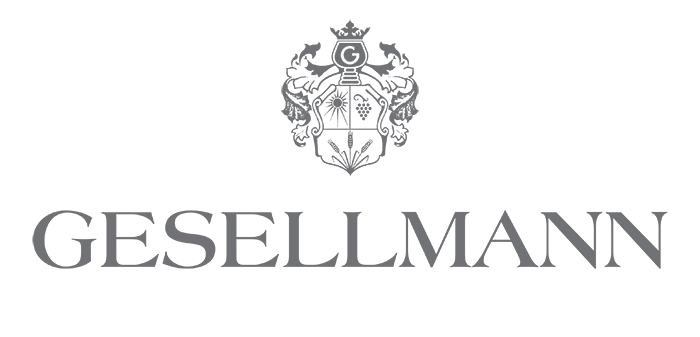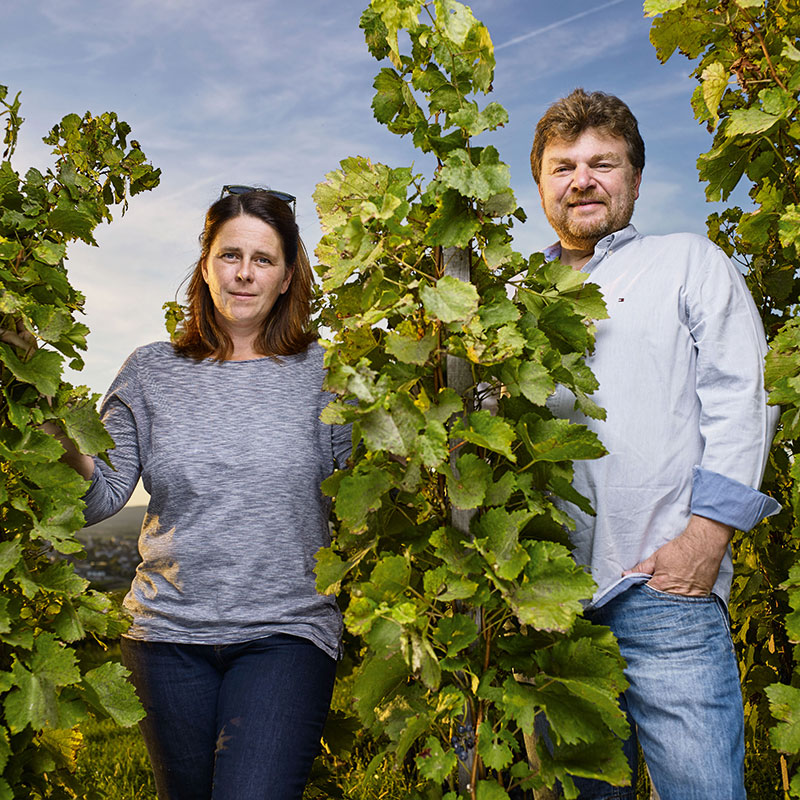 It is not only the flagship grape variety Blaufränkisch that finds the best conditions for ripening at the Gesellmann winery in central Burgenland. International grapes such as Merlot, Pinot Noir and Chardonnay also shine here. The winegrowing family demonstrates how to bridge the gap between regional and international grape varieties with great sensitivity and the highest standards.
It is not only the flagship grape variety Blaufränkisch that finds the best conditions for ripening at the Gesellmann winery in central Burgenland. International grapes such as Merlot, Pinot Noir and Chardonnay also shine here. The winegrowing family demonstrates how to bridge the gap between regional and international grape varieties with great sensitivity and the highest standards.If you ask the winemaking couple Silvia and Albert Gesellmann what makes the location of their family-run winery of the same name not far from Lake Neusiedl so special, the answer is clear: "The Pannonian climate." A magic word that characterises the 50 hectares of vineyards around the wine village of Deutschkreutz at Mittelburgenland. Even though prime locations such as Hochberg, Siglos and Steinriegel and the calcareous clay soil on which the vines grow are ideal parameters for winegrowing, it is the special climatic conditions that make the decisive difference.
The sunny days, when temperatures are very pleasant until late autumn, and the cool nights provide the perfect conditions for wines rich in finesse and greatness. And it is precisely these that the passionate winegrowing family aims to create.

The Gesellmann estate was first mentioned in a document in 1719 and has been known as a family winery since 1767. Since then, many generations have contributed to preserving and passing on the knowledge accumulated together and redefining it in combination with modernity. Each generation has left its mark, added a piece to the heritage and also achieved one or two milestones. One of these - in the family history itself, but also in the history of viticulture in Burgenland - was set by Albert's father Engelbert Gesellmann in the 1980s with the planting of international grape varieties and their ageing in French barriques - an absolute novelty in Austria at the time. The results of this pioneering endeavour are among the icons of today: the Cuvée Opus Eximium since 1988 and the Cuvée Bela Rex, first produced in 1992. While Cabernet Sauvignon and Pinot Noir were an integral part of Opus Eximium in the early years, for over two decades it has only been the three indigenous grape varieties Blaufränkisch, St. Laurent and Zweigelt. A commitment that reflects the cornerstones of the Gesellmann philosophy: Living regionality, preserving tradition and allowing progress.
"In harmony with nature, we want to create wines with a strong character that are typical of the region every year," has been the guiding principle of winemaker and cellar master Albert Gesellmann for many years. This goes hand in hand with many conscious decisions and moments in the orientation of the winery, but also in the course of a wine year. This is because the Gesellmanns not only live the connection between man and nature with a clear commitment to organic cultivation, but also in such elaborate work steps as the pure harvest by hand. "Mindfulness in thought and action. Joy in creation. Wine as an expression of all this," says the winemaker, full of gratitude for the success of his work and his wines.
We cordially invite you to discover this great winery and the 2020 OP Eximium No 33 at our German-speaking wein.plus:club online tasting 'Rote Verführung' in September 2023. Places available for wine professionals and private wine fans are very limited.
You can also order this wine via the online shops listed at wein.plus:find+buy.